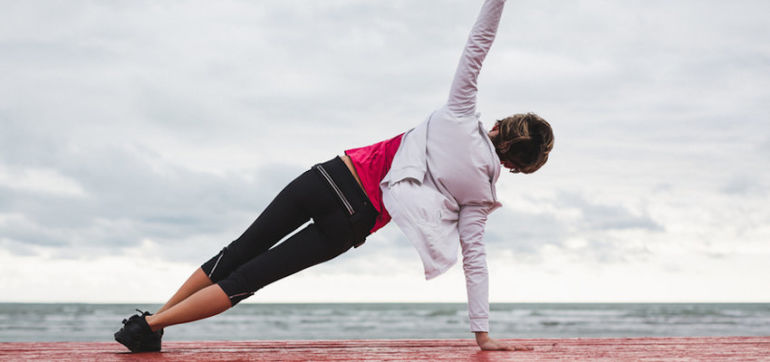Lose Weight > Common Sense To Lose Weight > Common Sense Article > Hydro Power - How It Works And What We Need
Hydro Power - How It Works And What We Need
Part of the beauty of hydropower lies in its simplicity. Moving water (kinetic energy) spins a turbine or wheel (mechanical energy), which drives a generator (electrical energy). Archaeologists have found evidence of water storage dams in Jordan, Egypt and elsewhere in the Middle East that date back 5,000 years to 3000 BC. One of the earliest designers to document his plans was Vitruvius (c.70 BC-c.25 BC), a Roman architect and engineer, who described an undershot waterwheel that could generate power. The Romans built many waterwheels, with the most ambitious being the one is Barbegal, France, in the 4th Century AD. Connected to a large aqueduct system that fed water to the city of Arles, Barbegal was a massive flour mill with not one but sixteen waterwheels in two parallel rows. The water turned the first pair of wheels, then flowed downhill to the second pair, then downhill again and so on until it had flowed through and turned all eight sets, after which it ran into a runoff pool at the bottom of the hill.
Today hydropower generates about 15 percent of the world's electricity (about 6 percent of the total energy supply). Rather than using waterwheels on a moving river or through a duct, most hydroelectric plants extract energy from the potential energy that comes from the vertical distance the water drops (the "head"). The water is channeled through a sluice or gate, or through enclosed pipes that funnel the water down to the turbines; these channels are called penstocks.
Hydroelectric Plants
The typical hydroelectric plant needs four things to generate power:
Dam - The dam holds back a river, raising the level, and controls the flow through the penstock(s). Dams create reservoirs that can be used for recreation, but it is the height difference between the stored water above and the turbines below that represents the potential energy.
Turbines - The water behind the dam is channeled through the penstocks past the blades of turbines, which spin. This converts the kinetic energy to mechanical energy. 2. Turbine. The force of falling water pushing against the turbine's blades causes the turbine to spin. A water turbine is much like a windmill, except the energy is provided by falling water instead of wind. The turbine converts the kinetic energy of falling water into mechanical energy.
Generator - The shafts of the turbines turn a generator, thus converting the mechanical energy to electrical energy.
Transmission lines - The electricity is transmitted to substations and transported to consumers through the power lines.
Microhydros
Hydroelectrical plants are big and powerful, but did you know that you can have your very own microhydro plant? All you need is a stream or a river with enough water running through it at the right pressure, and you can set up a system that feeds into turbines and generators, and into your home or business. Just as you can with your solar and/or wind systems, you can design a system that is grid-connected with battery backup, grid-connected, or standalone.
Microhydros come in two basic flavors: low-head and high-head. Head, you'll recall, is the height differential between the water and the turbine. That corresponds to pressure. Think of a high-head system as one running off a waterfall, and a low-head system as one running off a fast-moving stream, although that isn't always the case.
In a quick search online for microhydro resources, the names "Don Harris" and "HarrisHydro Systems" turn up over and over, with good reason: Harris is a well known pioneer in microhydro. He designs and manufactures turbine and generator systems in a shop that he powers with a microhydro system of his own. His designed feature a Pelton wheel, a highly efficient tangential-flow impulse turbine with spoon-shaped blades that capture a jet of water.
Impulse turbines transfer energy according to Newton's second law of motion, which is roughly paraphrased as "the momentum of an object, or force, is equal to the object's mass multiplied by its acceleration. It works like so: first, the water's potential energy (the head) is converted to kinetic energy by being funneled through a nozzle to form a jet. The jet of water moves at a given velocity, but when it strikes the spoons/buckets of the turbine, it loses velocity or acceleration, so the momentum changes. That change in momentum translates to an exertion of force that turns the shaft. The water pressure itself doe not change. Impulse turbines are the most commonly used turbines in domestic systems, and those with high heads.
Reaction turbines transfer energy according to Newton's third law of motion, which is roughly paraphrased as "for every action force there is an equal, but opposite, reaction force." The water moves through the turbine, losing pressure, which forces it to give up its energy. The turbines have to be either encased (to contain the water pressure or suction) or be completely submerged by the flowing water. Water wheels are reaction turbines. Most turbines are reaction-type turbines. They are used for systems with low and medium heads.
A typical microhydro system, then, needs a stream, an intake system, a penstock, and a powerhouse. Although the actual components are much more high-tech and specialized, you can envision a high-head microhydro system as this as a box or funnel at the top of a waterfall, a garden hose or a trough running downhill from the intake, the water from the hose/trough shooting onto a turbine (probably Pelton-style), and the turbine turning a generator. A low-head microhydro system is equally simple. They have a screened intake (or a mini-dam), and this feeds into a settling basin or forebay for any silt to precipitate out; this empties into a short canal that feeds into a ten-foot draft tube. The water flowing through turns a turbine (probably Turgo-style). Note that in neither case do you block or divert the stream (for which you would need a permit anyway, even if the water is on your property, and which may turn out to be prohibited in your area).
Hydropower Advantages
1. As long as the water is there in sufficient quantity, hydro stations can generate power 24/7.
2. Large hydro stations can shift into maximum capacity to meet peak demands simply by controlling the amount of water released.
3. Microhydro systems produce no pollutants.
4. Hydropower is a renewable resource.
5. Most countries have access to waterways that can be used for hydro power.
6. Large dams can be useful for flood control.
7. Microhydro systems can provide power without affecting water quality, without affecting the habitat, and without altering the course of the river or stream. It leaves a very tiny footprint.
8. Large and mega-dams can create recreational lakes in areas where before there were none.
Hydropower Disadvantages
1. Large hydro stations that create reservoirs actually dump huge amounts of methane and CO2 into the atmosphere. When the area behind the dam is flooded, the trees and other plant material that get covered up rot and sift to the bottom where they continue to decompose without oxygen. This creates methane, which is released when the water flows through the turbines.
2. The reservoirs created by large dams and mega-dams destroy local habitats. When the area is flooded, plant life is submerged, and any animal and human life in the area must relocate or perish.
3. Large hydroelectric dams are expensive to build.
4. Large hydroelectric dams can only be used in a limited number of places those with large water supplies.
5. Damming rivers and streams changes the natural waterways, diverting water from areas that depend on it.
6. Damming rivers changes the quality, quantity and even the temperature of the water that flows downstream. This can have disastrous effects on agriculture as well as potability.
7. Changing the path of a river can cause serious disputes between neighbors, from individuals to nations.
8. Water moving over a dam can pick up nitrogen, causing fish kills downstream.
9. Many small and medium dams built in the past to power industries such as mills and factories are no longer used, and are growing unstable. Allowing them to self-destruct rather than removing them in a controlled manner can lead to serious flooding, including loss of life and property.
10. Dams alter the spawning patterns of the fish, and often result in absenting entire species from an area.
11. When large amounts of water are released from a large dam or mega-dam the shores of man-made reservoirs naturally recede, leaving behind mud flats and reducing the surface area leaving less space for fish. Sometimes Mother Nature plays a role, as with Lake Powell, created by the Glen Canyon Dam. With reduced flow of the Colorado River, evaporation, and seepage back into the canyon banks, Lake Powell loses an average of 860,000 acre feet of water each year about as much water as Los Angeles consumes annually. While it is perhaps one of the most beautiful lakes in the U.S. with its red-rock canyon sides, 150 feet below its 266 surface miles lie centuries of archaeological riches as well as the canyon itself.
Today hydropower generates about 15 percent of the world's electricity (about 6 percent of the total energy supply). Rather than using waterwheels on a moving river or through a duct, most hydroelectric plants extract energy from the potential energy that comes from the vertical distance the water drops (the "head"). The water is channeled through a sluice or gate, or through enclosed pipes that funnel the water down to the turbines; these channels are called penstocks.
Hydroelectric Plants
The typical hydroelectric plant needs four things to generate power:
Dam - The dam holds back a river, raising the level, and controls the flow through the penstock(s). Dams create reservoirs that can be used for recreation, but it is the height difference between the stored water above and the turbines below that represents the potential energy.
Turbines - The water behind the dam is channeled through the penstocks past the blades of turbines, which spin. This converts the kinetic energy to mechanical energy. 2. Turbine. The force of falling water pushing against the turbine's blades causes the turbine to spin. A water turbine is much like a windmill, except the energy is provided by falling water instead of wind. The turbine converts the kinetic energy of falling water into mechanical energy.
Generator - The shafts of the turbines turn a generator, thus converting the mechanical energy to electrical energy.
Transmission lines - The electricity is transmitted to substations and transported to consumers through the power lines.
Microhydros
Hydroelectrical plants are big and powerful, but did you know that you can have your very own microhydro plant? All you need is a stream or a river with enough water running through it at the right pressure, and you can set up a system that feeds into turbines and generators, and into your home or business. Just as you can with your solar and/or wind systems, you can design a system that is grid-connected with battery backup, grid-connected, or standalone.
Microhydros come in two basic flavors: low-head and high-head. Head, you'll recall, is the height differential between the water and the turbine. That corresponds to pressure. Think of a high-head system as one running off a waterfall, and a low-head system as one running off a fast-moving stream, although that isn't always the case.
In a quick search online for microhydro resources, the names "Don Harris" and "HarrisHydro Systems" turn up over and over, with good reason: Harris is a well known pioneer in microhydro. He designs and manufactures turbine and generator systems in a shop that he powers with a microhydro system of his own. His designed feature a Pelton wheel, a highly efficient tangential-flow impulse turbine with spoon-shaped blades that capture a jet of water.
Impulse turbines transfer energy according to Newton's second law of motion, which is roughly paraphrased as "the momentum of an object, or force, is equal to the object's mass multiplied by its acceleration. It works like so: first, the water's potential energy (the head) is converted to kinetic energy by being funneled through a nozzle to form a jet. The jet of water moves at a given velocity, but when it strikes the spoons/buckets of the turbine, it loses velocity or acceleration, so the momentum changes. That change in momentum translates to an exertion of force that turns the shaft. The water pressure itself doe not change. Impulse turbines are the most commonly used turbines in domestic systems, and those with high heads.
Reaction turbines transfer energy according to Newton's third law of motion, which is roughly paraphrased as "for every action force there is an equal, but opposite, reaction force." The water moves through the turbine, losing pressure, which forces it to give up its energy. The turbines have to be either encased (to contain the water pressure or suction) or be completely submerged by the flowing water. Water wheels are reaction turbines. Most turbines are reaction-type turbines. They are used for systems with low and medium heads.
A typical microhydro system, then, needs a stream, an intake system, a penstock, and a powerhouse. Although the actual components are much more high-tech and specialized, you can envision a high-head microhydro system as this as a box or funnel at the top of a waterfall, a garden hose or a trough running downhill from the intake, the water from the hose/trough shooting onto a turbine (probably Pelton-style), and the turbine turning a generator. A low-head microhydro system is equally simple. They have a screened intake (or a mini-dam), and this feeds into a settling basin or forebay for any silt to precipitate out; this empties into a short canal that feeds into a ten-foot draft tube. The water flowing through turns a turbine (probably Turgo-style). Note that in neither case do you block or divert the stream (for which you would need a permit anyway, even if the water is on your property, and which may turn out to be prohibited in your area).
Hydropower Advantages
1. As long as the water is there in sufficient quantity, hydro stations can generate power 24/7.
2. Large hydro stations can shift into maximum capacity to meet peak demands simply by controlling the amount of water released.
3. Microhydro systems produce no pollutants.
4. Hydropower is a renewable resource.
5. Most countries have access to waterways that can be used for hydro power.
6. Large dams can be useful for flood control.
7. Microhydro systems can provide power without affecting water quality, without affecting the habitat, and without altering the course of the river or stream. It leaves a very tiny footprint.
8. Large and mega-dams can create recreational lakes in areas where before there were none.
Hydropower Disadvantages
1. Large hydro stations that create reservoirs actually dump huge amounts of methane and CO2 into the atmosphere. When the area behind the dam is flooded, the trees and other plant material that get covered up rot and sift to the bottom where they continue to decompose without oxygen. This creates methane, which is released when the water flows through the turbines.
2. The reservoirs created by large dams and mega-dams destroy local habitats. When the area is flooded, plant life is submerged, and any animal and human life in the area must relocate or perish.
3. Large hydroelectric dams are expensive to build.
4. Large hydroelectric dams can only be used in a limited number of places those with large water supplies.
5. Damming rivers and streams changes the natural waterways, diverting water from areas that depend on it.
6. Damming rivers changes the quality, quantity and even the temperature of the water that flows downstream. This can have disastrous effects on agriculture as well as potability.
7. Changing the path of a river can cause serious disputes between neighbors, from individuals to nations.
8. Water moving over a dam can pick up nitrogen, causing fish kills downstream.
9. Many small and medium dams built in the past to power industries such as mills and factories are no longer used, and are growing unstable. Allowing them to self-destruct rather than removing them in a controlled manner can lead to serious flooding, including loss of life and property.
10. Dams alter the spawning patterns of the fish, and often result in absenting entire species from an area.
11. When large amounts of water are released from a large dam or mega-dam the shores of man-made reservoirs naturally recede, leaving behind mud flats and reducing the surface area leaving less space for fish. Sometimes Mother Nature plays a role, as with Lake Powell, created by the Glen Canyon Dam. With reduced flow of the Colorado River, evaporation, and seepage back into the canyon banks, Lake Powell loses an average of 860,000 acre feet of water each year about as much water as Los Angeles consumes annually. While it is perhaps one of the most beautiful lakes in the U.S. with its red-rock canyon sides, 150 feet below its 266 surface miles lie centuries of archaeological riches as well as the canyon itself.
Related Articles
-
What does your saliva say about your health?
Salivating is one of those human functions that many of us fin
-
Ephedra Diet Pill Product Information Smacker With Hoodia Review
Smacker Ephedra boasts that the ephedra product will SMACK THAT FAT, b
-
Is Honey The Most Amazing Food On The Planet?
It may very well be. I love honey and eat it every day. I use it as
-
Weight Loss Myth? Milk can Help You Lose Weight
It can be difficult to sort out which foods should be part of a sensib
-
The Relationship Between Sleep, Health and Body Weight
Sleep Yourself Thin!There have been various studies examining th
-
Weight Loss - The Blood Type Diet
This diet is considered a fad diet and was developed and outlined b
- DON'T MISS
- Why I Hate Bikini Body Pressure + How To Get Over It For Good
- Stop Dieting and Lose Weight Anyway
- Benefits Of Water Fasting Beyond Just Weight Loss
- 4 Reasons the Quinoa Grain Can Help You Lose Weight
- Diet Solution Program - When You Should Put Your Kids On A Diet
- Dieting You Must Reset Your Weightostat
- Finally, A Weight Loss Program That Works
- Lida Daidaihua Products for Weight Loss
- Abs Diet Guidelines
- 5 Things You Need To Know About NurtiSystem Food




